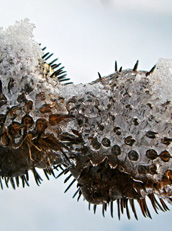Roundtable
Predicting the Past
Poet Amatoritsero in Conversation with Poet, Armand Garnet Ruffo
 Armand Garnet Ruffo was born in the small northern town of Chapleau, Ontario and currently resides in Ottawa, where he teaches Native literature and creative writing at Carleton University. He has previously taught creative writing at both the Banff Centre for the Arts and the En'owkin International School of Writing in Penticton, British Columbia.
Armand Garnet Ruffo was born in the small northern town of Chapleau, Ontario and currently resides in Ottawa, where he teaches Native literature and creative writing at Carleton University. He has previously taught creative writing at both the Banff Centre for the Arts and the En'owkin International School of Writing in Penticton, British Columbia.
Amatoritsero Ede: Naming in certain cultures – especially traditional cultures are important and significant. Can you tell us about your name? It is interesting that you have not anglicised your name as many first nation people do.
Armand Garnet Ruffo: The name I use publicly is from my father’s European side of the family. It’s the name that I grew up with at school. I also have an Ojibway name that was given to me by my grandmother when I was quite young. Roughly translated it means Turning Sky, which is a family tradition as my great, great grandfather’s name was Sahquakegick which means Opening In the Sky. I don’t use my Ojibway name publicly because I don’t write in Ojibway, and I think it would appear somewhat pretentious unless I were using Anishinabemowin.
A.E.: Geronimo’s Grave is a series of long inter-connected poems on the historical figure of Geronimo. What inspired you to write this long memorial Ode?
A.G. R.: I was attending a writer’s conference in Oklahoma in the early nineties, and I rented a car to do some sightseeing. I drove to Muskogee to see the museum of “The Five Civilized Tribes – a name I’ve always though odd – and then went over to see the great salt flats. Somehow I ended up at Fort Sill where Geronimo was held prisoner for life. I didn’t specifically intend to visit the fort, but since I was there I decided to take it in. It’s now a museum. I was immediately entranced. Later I went over to his gravesite and that’s when I saw the fresh cut roses that someone had recently left him. I was very moved. It occurred to me that everything he stood for was still very much alive some one hundred years later. He hadn’t been forgotten. Back in Canada I thought that I would write a poem in his honour. One poem led to another and as I got deeper into his life I realized that I was also writing about my own. Hence the reason the book moves in both historical to the contemporary landscapes.
A.E.: Could you tell us a bit of the history behind the person of Geronimo?
A.G.R.: Interestingly, when I read from the book in the States somebody always seems to have a story to tell me. The last time was in Arkansas of all places. An older woman came up after the reading and complimented the book and then told me that she was a relative of Geronimo. She then proceeded to tell me a story that I wished I had known. There are many, many stories about him. So who was he? Man or myth or both. A leader, a warrior, a husband, a father, a young man, an old man, a free man, a prisoner for life. Like the books say: “it is the land that will have the last word.”



